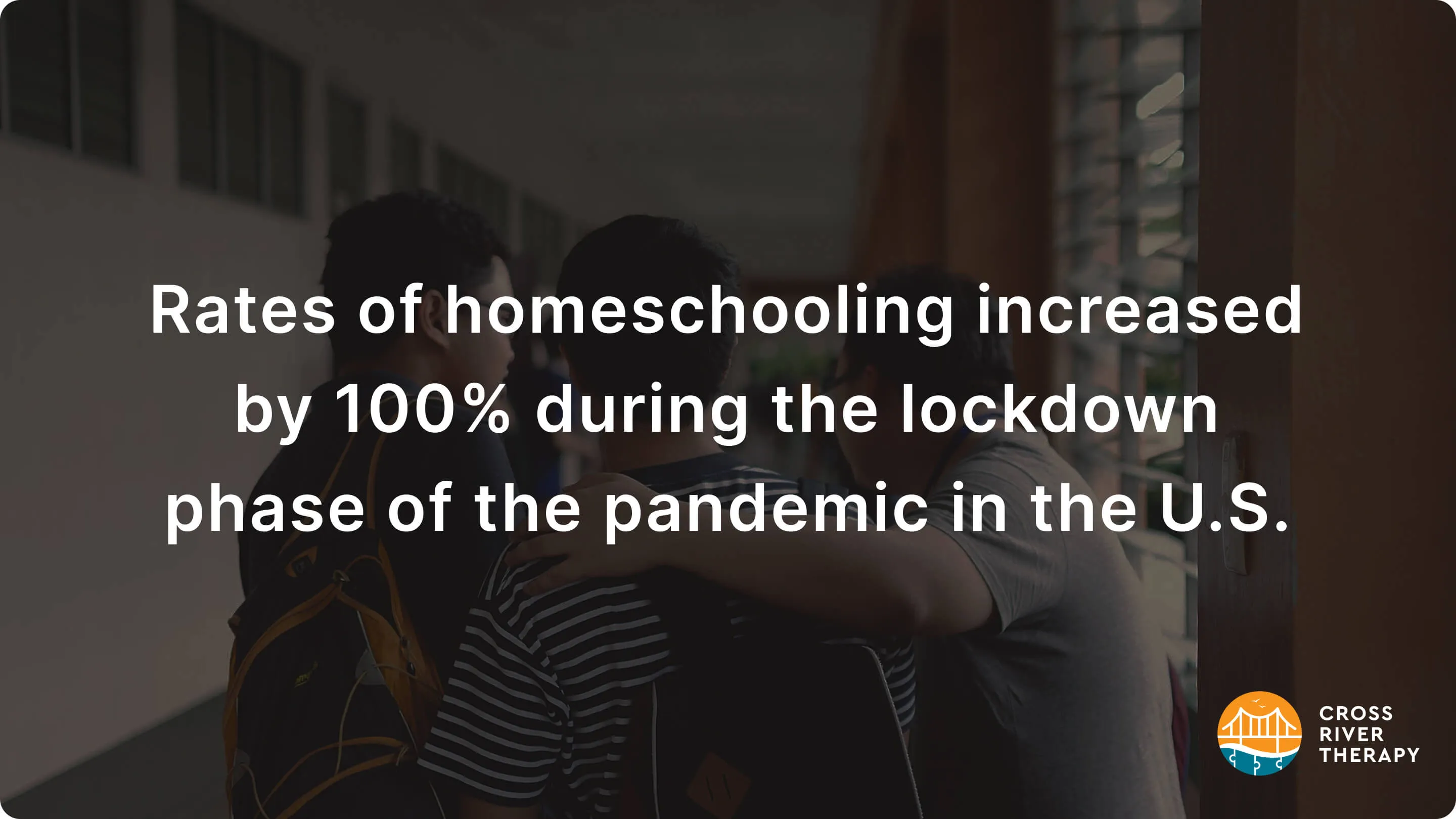43+ Homeschooling Statistics: Percentage Of Homeschooled Children
3% to 4% of children in the US are homeschooled, according to the most recent homeschooling statistics.
10 Homeschooling vs. Public Schooling Statistics
- There are 3.7 million homeschool students in the U.S.
- Based on the information provided by the US government, 3% to 4% of the primary school-aged population in America are homeschooled.
- On the other hand, in the fall of 2021, around 49.5 million students were enrolled in public schools, and around 4.7 million students attended private schools.
- The average cost of homeschooling is $700-$1,800 per student annually.
- In the U.S, 6.73% of children at K-12 grade levels receive homeschooling.
- Since the beginning of 2020, 9 million Americans were homeschooled once or more during their youth.
- Female students make up 51% of homeschooled people, while males account for 49% of the homeschooled population.
- The majority of homeschooled students are white, comprising 68% of the population. Hispanics are second, making up 15% of the body. Black and African American students are 8%, and Asians account for 4%.
- Until the end of 2019, the amount of homeschooled kids grew from 2% to 8% every year.
- The amount of homeschooled students changed in percentages from 3.4% to 9% from the beginning of 2019 until late 2020.
General Homeschooling Statistics
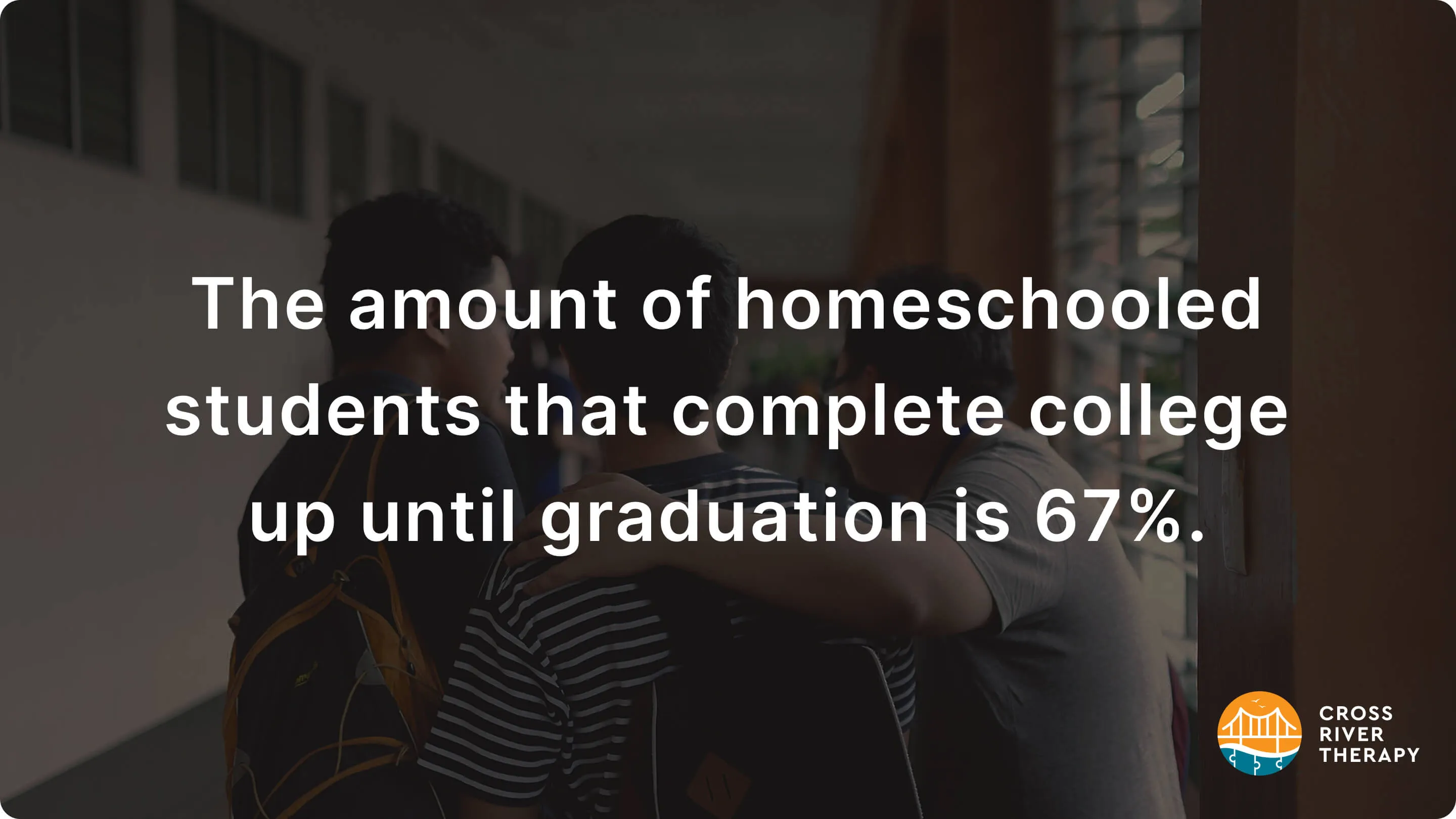
- The amount of homeschooled students that complete college up until graduation is 67%.
- During the COVID-19 pandemic, more than 300 million students around the world were homeschooled at the same time.
- A quarter of all homeschooled students, 25%, sign up for classes at a grade that's higher than the one recommended for peers of the same age.
- Boys earn 44% higher grades on tests measuring their reading comprehension when learning during homeschooling than boys in public schools do.
- Homeschooled students that take part in at least 5 extracurricular activities away from home make up 98% of the total.
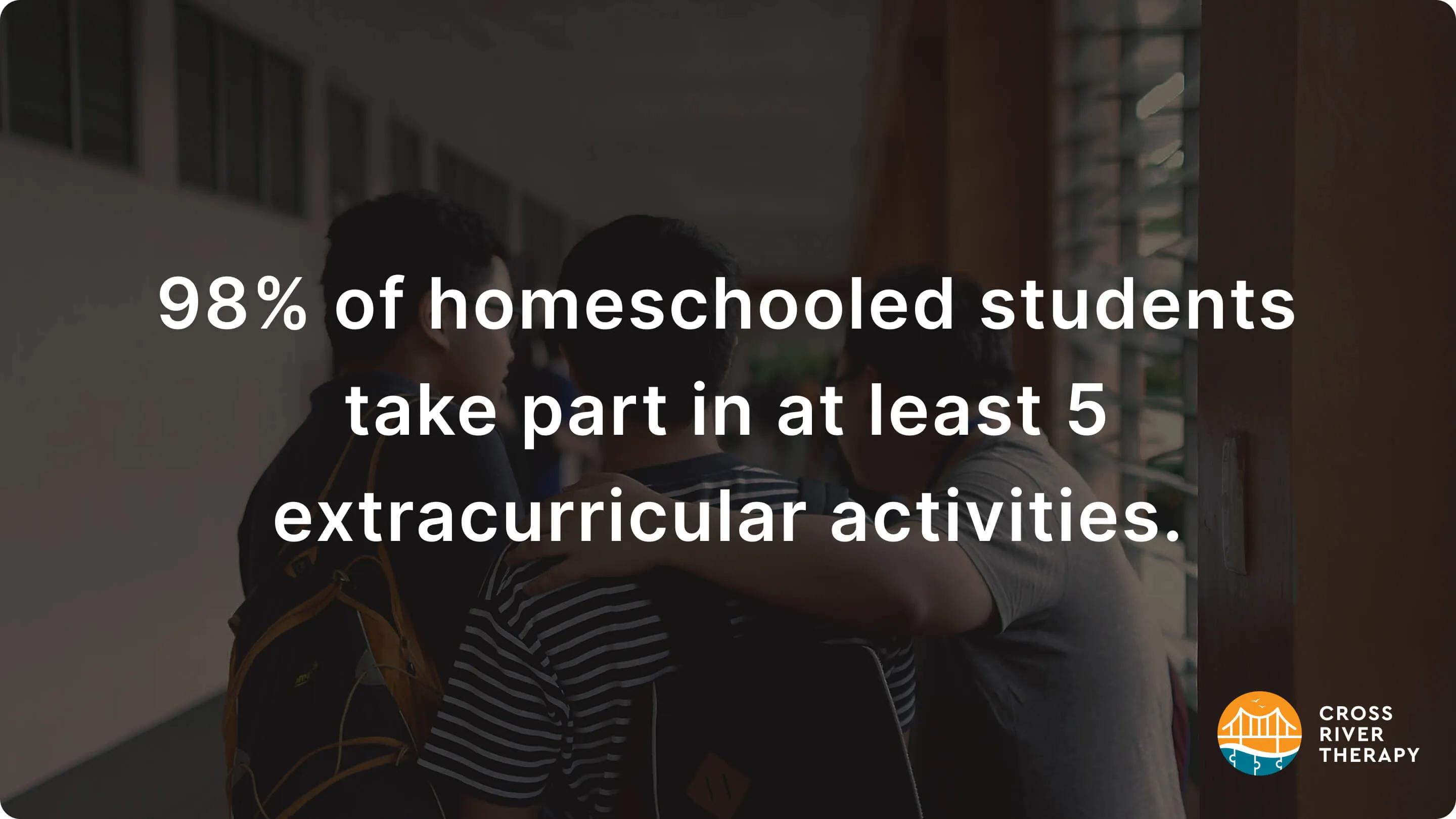
- $15,240 is spent by the taxpayers to fund public schools every year, which includes capital expenditures. Around 3.7 million students that are homeschooled account for savings of more than $56 billion for all taxpaying citizens. This amounts to the total that they didn't end up spending every year.
- For most homeschooled students, taxpayers spend almost nothing on them. However, the families of homeschooled kids spend about $600 on the educational needs of students every year. Since this is the case, such families are entirely independent of public funds and resources that are related to education.
- Minority homeschooling has increased, with 41% of homeschooled families being nonwhite and non-Hispanic.
- Since the beginning of 2020, more than 9 million Americans have been homeschooled.
- An environment that's safe for their child to learn was listed by 50% of the parents as the reason for homeschooling them.
- The need for their child to get hands-on learning was cited by 35% of parents as the purpose for homeschooling them.
- 25% of parents list discipline as the reason for homeschooling. 26% mentioned morality, and 24% listed easier access using closer proximity. 19% of parents listed contentions related to the reputation of public schools, while 15% named their religious convictions. 16% cited class sizes as the reason for homeschooling.
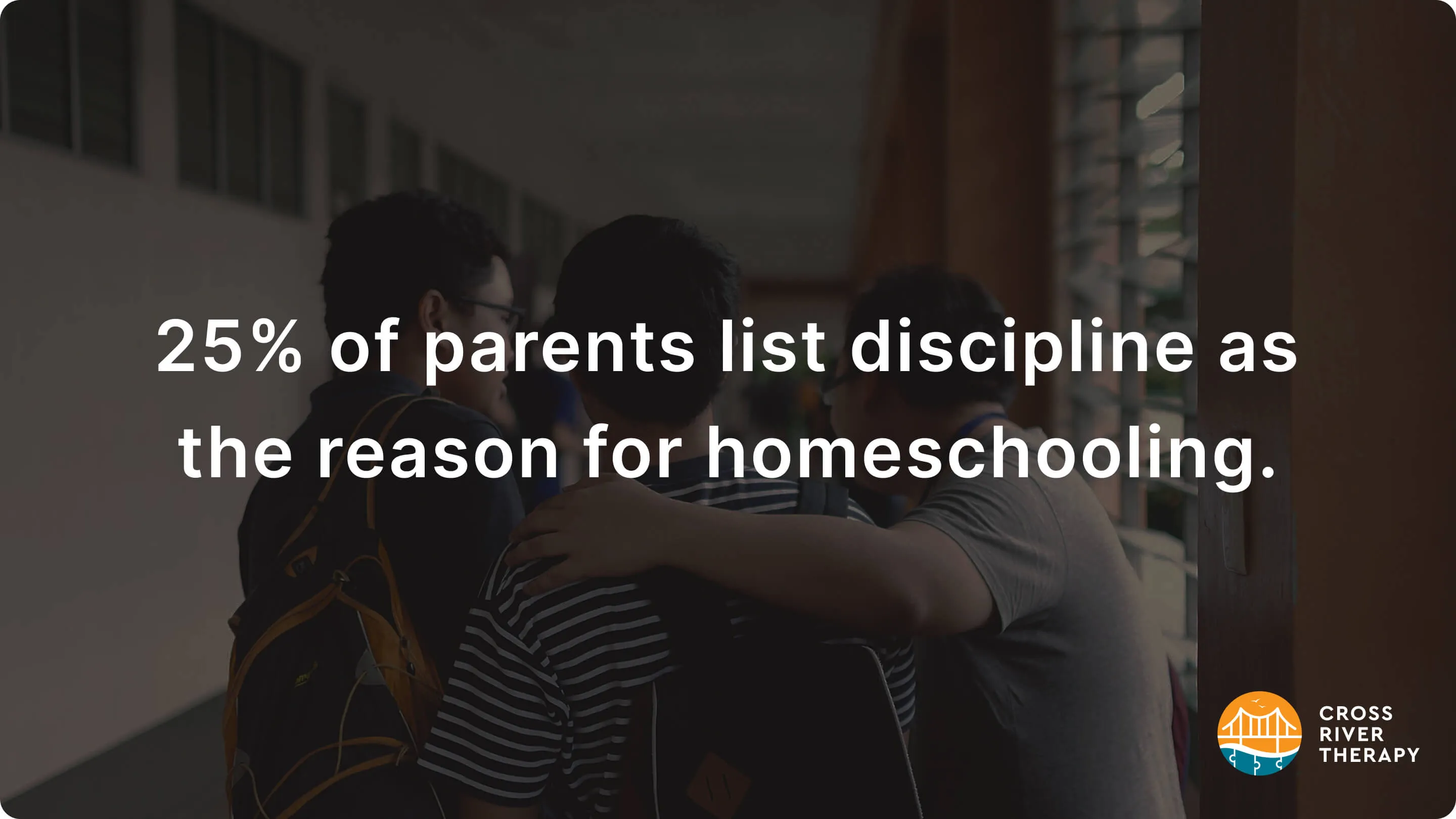
- Test scores, outside activities, and social issues were listed by 14% of parents as the purpose for homeschooling their kids.
- Diversity was listed by 12% of parents for the reasons they homeschool their children. Another 9% listed the size of classes as the motivation.
- Some parents are against homeschooling their children, with 42% citing a lack of social preparedness as the reason for not attempting at-home learning.
- 46% of parents reported the wish to not interrupt their children's friendships by not homeschooling them.
- 42% of parents simply don't see any reason for them to change the learning environment for their children to a homeschooled environment.
- The difficulty in juggling work with educating their child was listed by 37% of parents as the reason for not homeschooling.
- 37% of parents feel that homeschooling isn't feasible for their situation, though 35% think it would be a time management issue.
- 44% of African American parents, 47% of whites, and 45% of Hispanic parents don't homeschool their children for fear of disrupting their friendships and relationships.
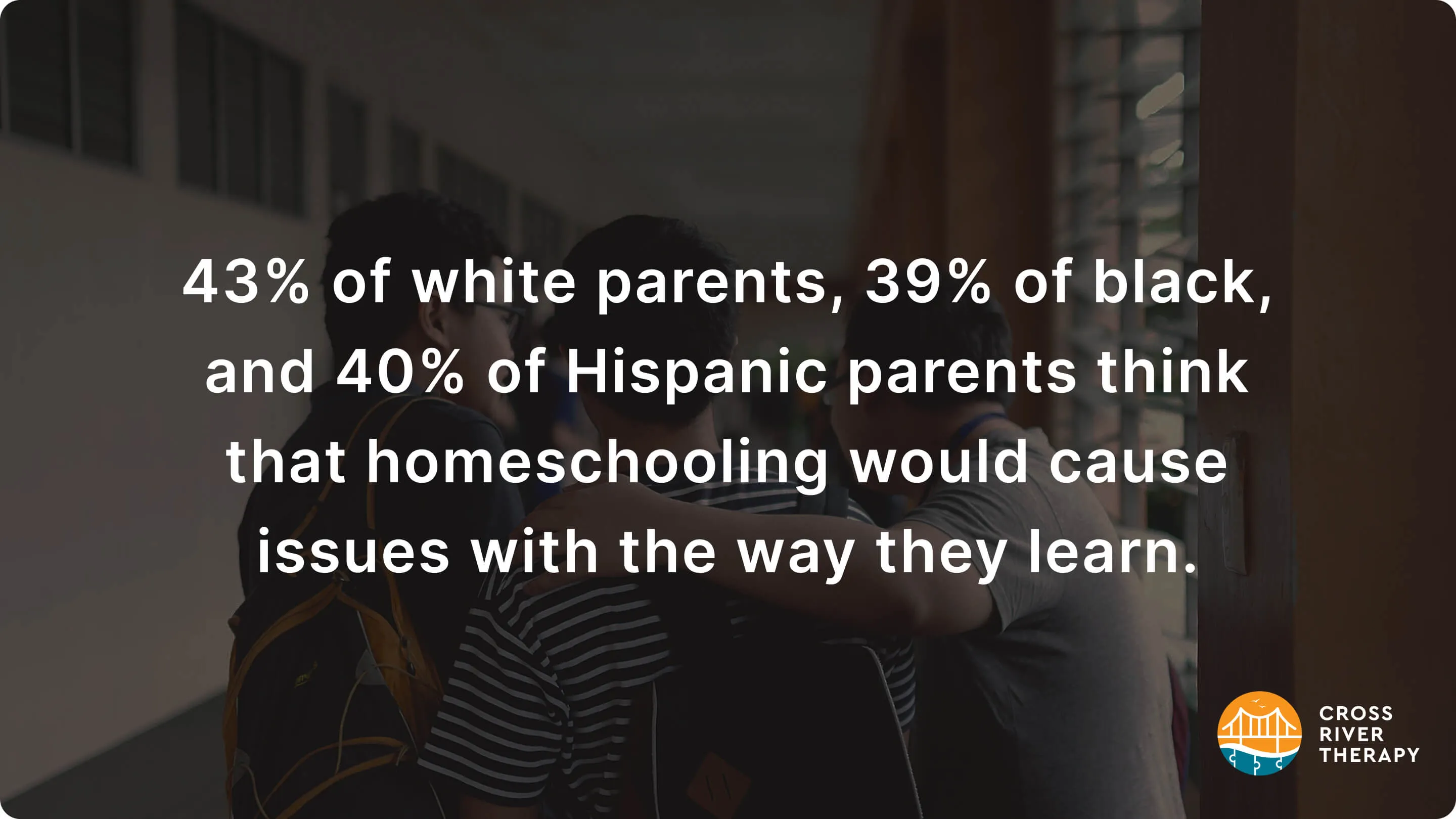
- 43% of white parents, 39% of black, and 40% of Hispanic parents think that homeschooling would cause issues with the way they learn.
- 46% of Hispanic parents, 39% of black parents, and 35% of white parents cite difficulty in coordinating work with their child's education for not homeschooling them.
- 35 of African American parents, 43% of white parents, and 41% of Hispanic parents think homeschooling would negatively impact the social development of their children.
- 34% of white parents, 40% of black parents, and 39% of Hispanic parents list time management as the reason for refusing to homeschool their children.
- 12% of Hispanic parents, 30% of black parents, and 21% of white parents have no monetary assistance to provide a quality homeschool education for their children.
- Households with at least three kids make up 48% of those that are homeschooled.
- Per student, the average price for homeschooling them is between $700 to $1,800 a year.
- 1 out of 3 households with homeschooled students has a yearly income greater than $100,000.
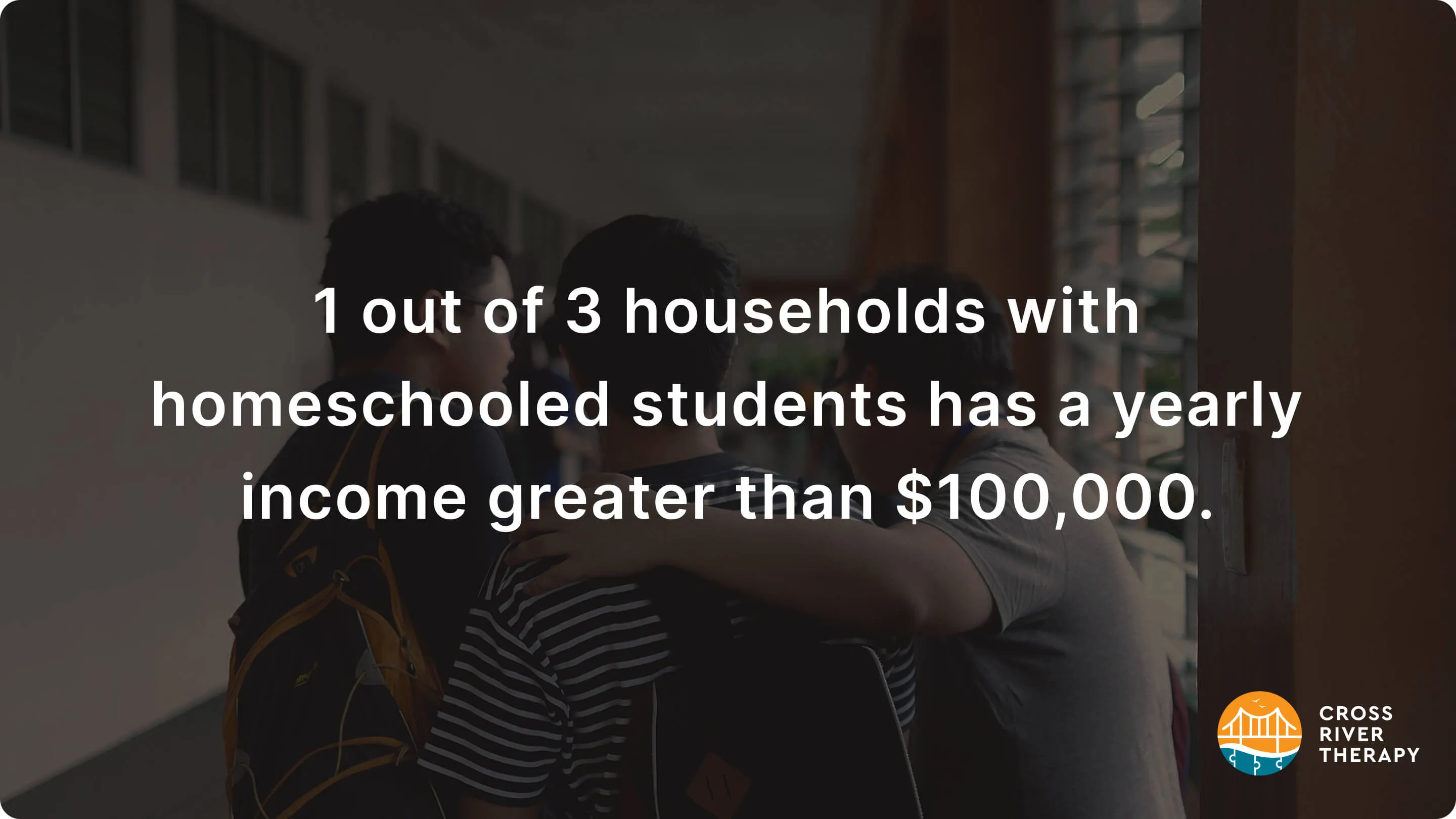
The Impact of COVID-19 on Homeschooling in the US
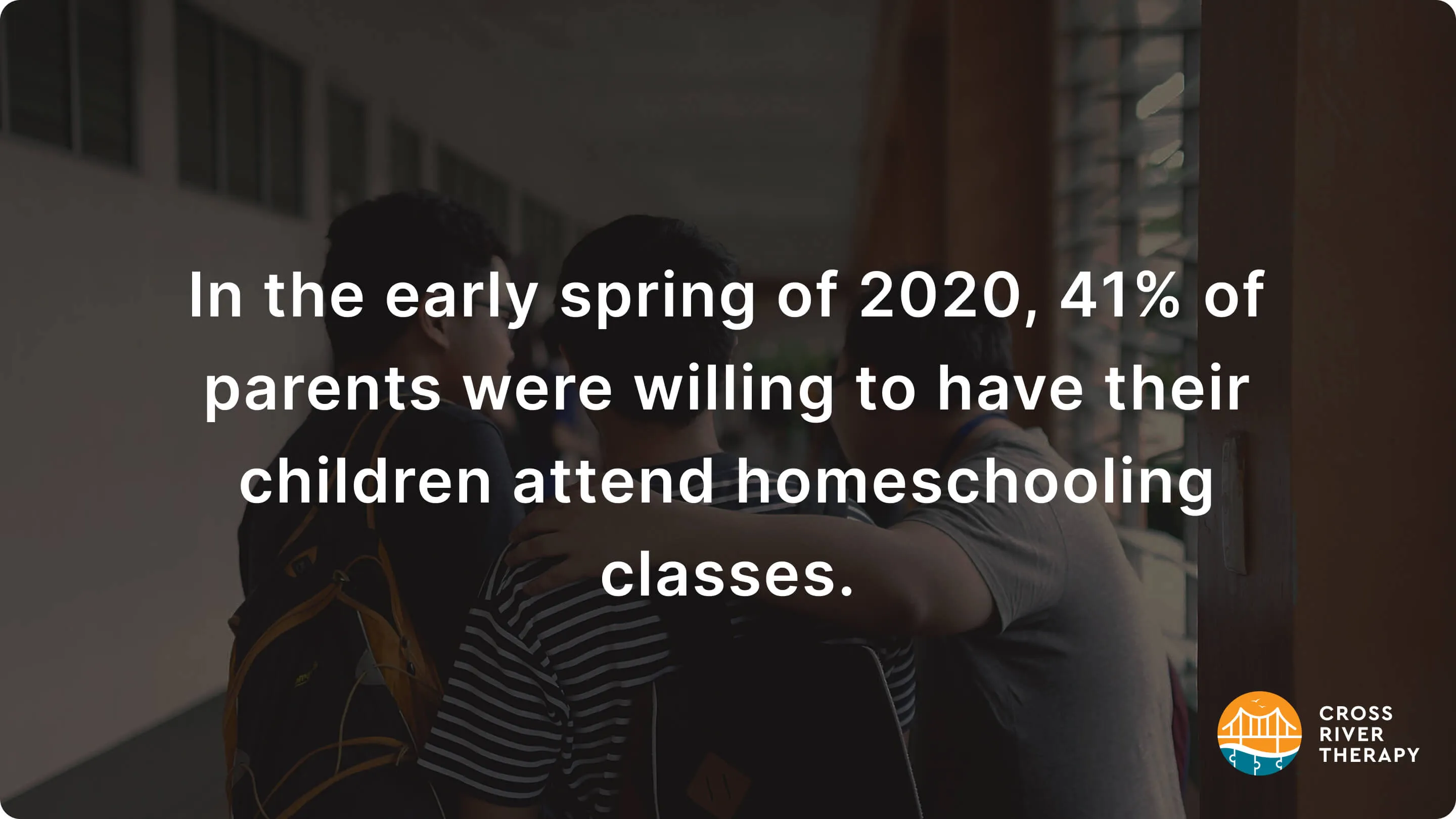
- In the early spring of 2020, 41% of parents were willing to have their children attend homeschooling classes.
- One survey done in the second quarter of 2020 revealed that 59% of parents were seriously prepared to try out homeschooling, though 30% still disagreed with it.
- Before the COVID-19 outbreak, there were 26% fewer parents agreed with homeschooling their kids.
- During the beginning of the pandemic, an additional 43% of parents were more willing to try homeschooling.
- 53% of African American parents think that the pandemic changed their attitudes on homeschooling in a positive way.
- Since early 2020, 26% of parents that have never homeschooled their children before considered full-time homeschooling. Simultaneously, 33% thought about having their children partially attend homeschooling classes.
- Just 68% of parents that homeschooled their children before early 2020 thought it was worthwhile.
- 83% of parents that had never homeschooled their kids before early 2020 thought it was worthwhile.
- 69% of students that were homeschooled before the pandemic indicated better enthusiasm for carrying out their studies the same way for the rest of the semester.
- 15% of parents that didn't homeschool their children in early 2020 were more likely to have them homeschooled during the next school year.
- Parents that homeschool their children before early 2020 account for 54% of those likely to carry on with it during their child's following school year.
The Number of Hours Students Learn Each Week in the US
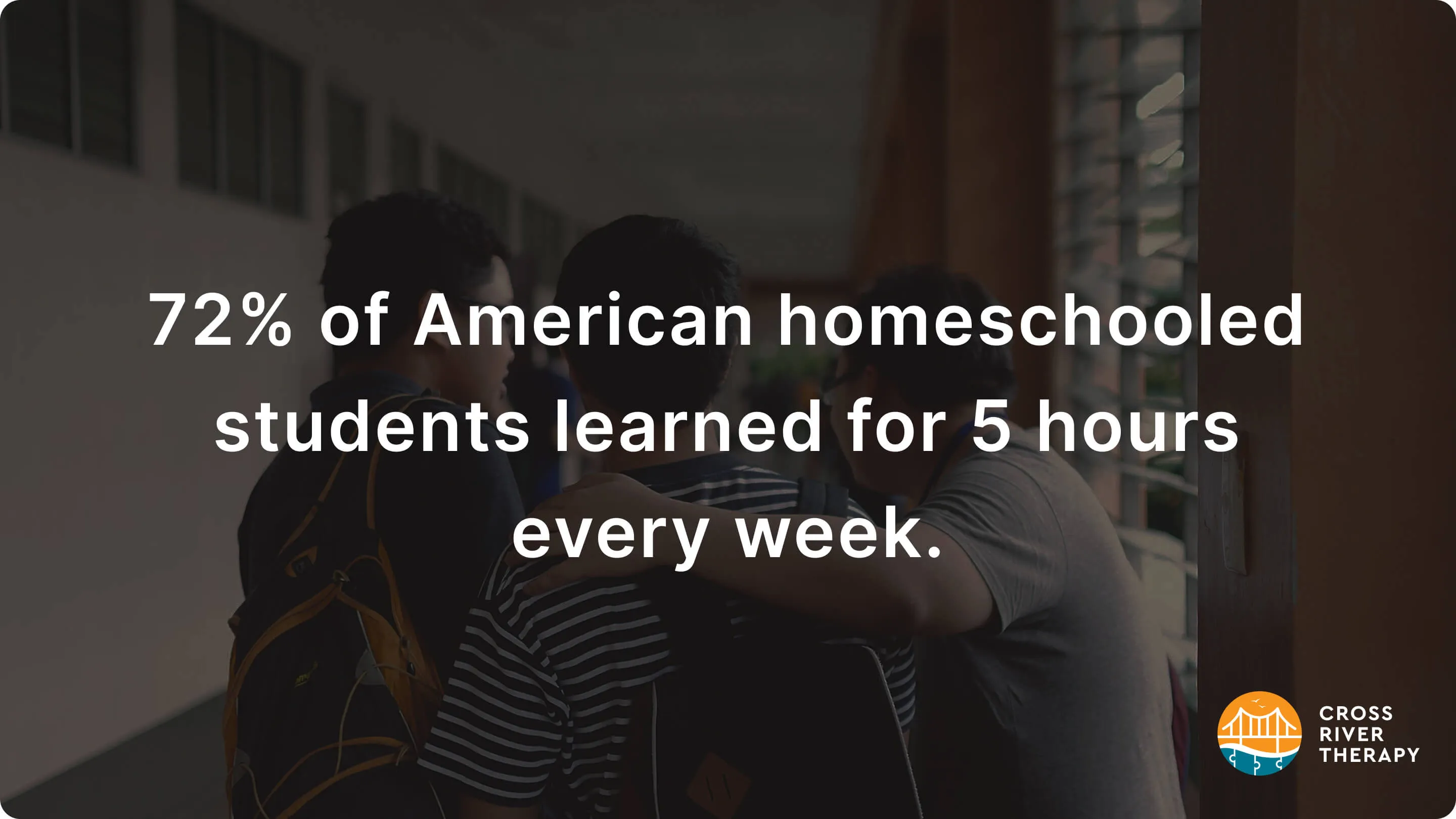
- 72% of American homeschooled students learned for 5 hours every week.
- 12% of US homeschooled students learned for 4 hours every week.
- 4% of American students learned for 6 hours every week, with 3% learning for 7 hours every week.
- 3 hours a week was the total for 4% of American students, with 2% being taught for just two hours every week.
- 50% of US homeschooled students learn between 25 to 40 hours every week.
- 28% of students learned between 11 to 24 hours per week, with 21% learning between 1 to 10 hours over 7 days.
FAQ
What is homeschooling?
- Homeschooling is an education that's led or conducted by a child's parents. It's a traditional method of teaching that just a few years ago was commonly thought of as an alternative to modern education. Homeschooling is sometimes taught by a third party, such as an instructor at a public school, private school, or one hired by the parents of a child.
- Homeschooling has become more appealing to the general public in the US. It's one of the fastest-expanding forms of education in the country. Also referred to as a home-based education, it's seen considerable growth throughout the world as well, including Canada, Australia, most of Europe, East Asia, Southeast Asia, and Central Africa.
How many homeschooled students are in the U.S.?
There are 3.7 million homeschooled students in the United States. States having the largest population of homeschooled students are Florida, Georgia, and North Carolina.
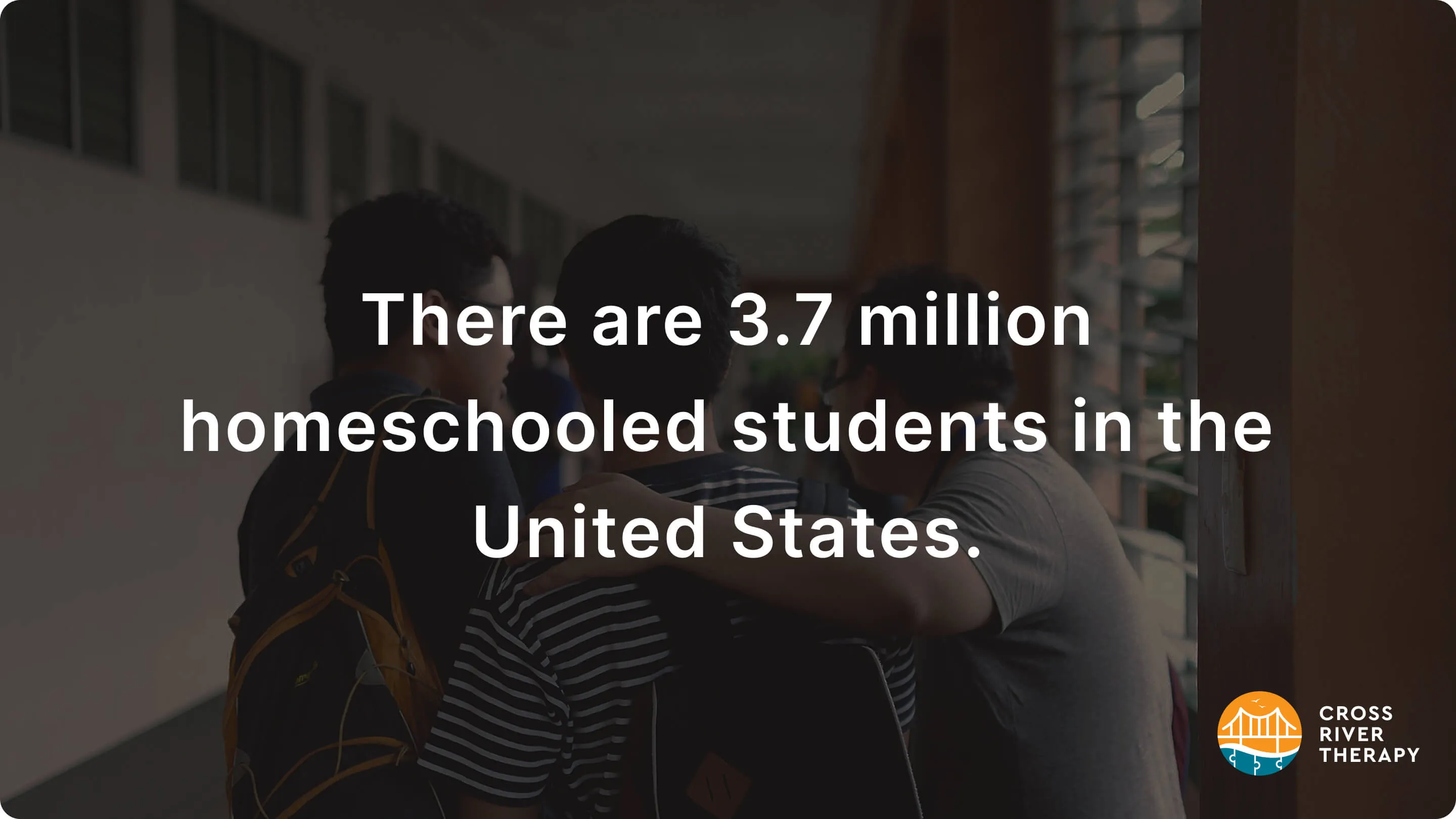
Do homeschool students perform better?
- 78% of studies show that homeschooled kids perform better than students attending identical classes at brick-and-mortar schools.
- Students that are homeschooled score between 15% to 30% higher than public school students on standardized tests.
- Black and African American homeschooled students score 23% to 42% higher than those attending public schools.
- Effect sizes from 0.06 to 0.15 indicate that kids in a regimented homeschooling environment perform better than their peers going to learning institutions.
- When parents show a strong dedication to providing their homeschooled children with proper education, the average scores for them are listed between 70% to 80%.
- Homeschooled kids have a 60% greater chance of earning higher-than-average scores on college admission exams like the ACT and SAT.
- University and college students that were homeschooled have a 60% greater chance of earning higher grade-point averages during the first and fourth-year cycles of their education. When factors such as a student's demographic, and college prep are factored in, the gap could increase even higher.
What percentage of students are homeschooled?
In the United States, 6.73% of children at K-12 grade levels receive homeschooling. Based on the information provided by the US government, 3% to 4% of the primary school-aged population in America are homeschooled.
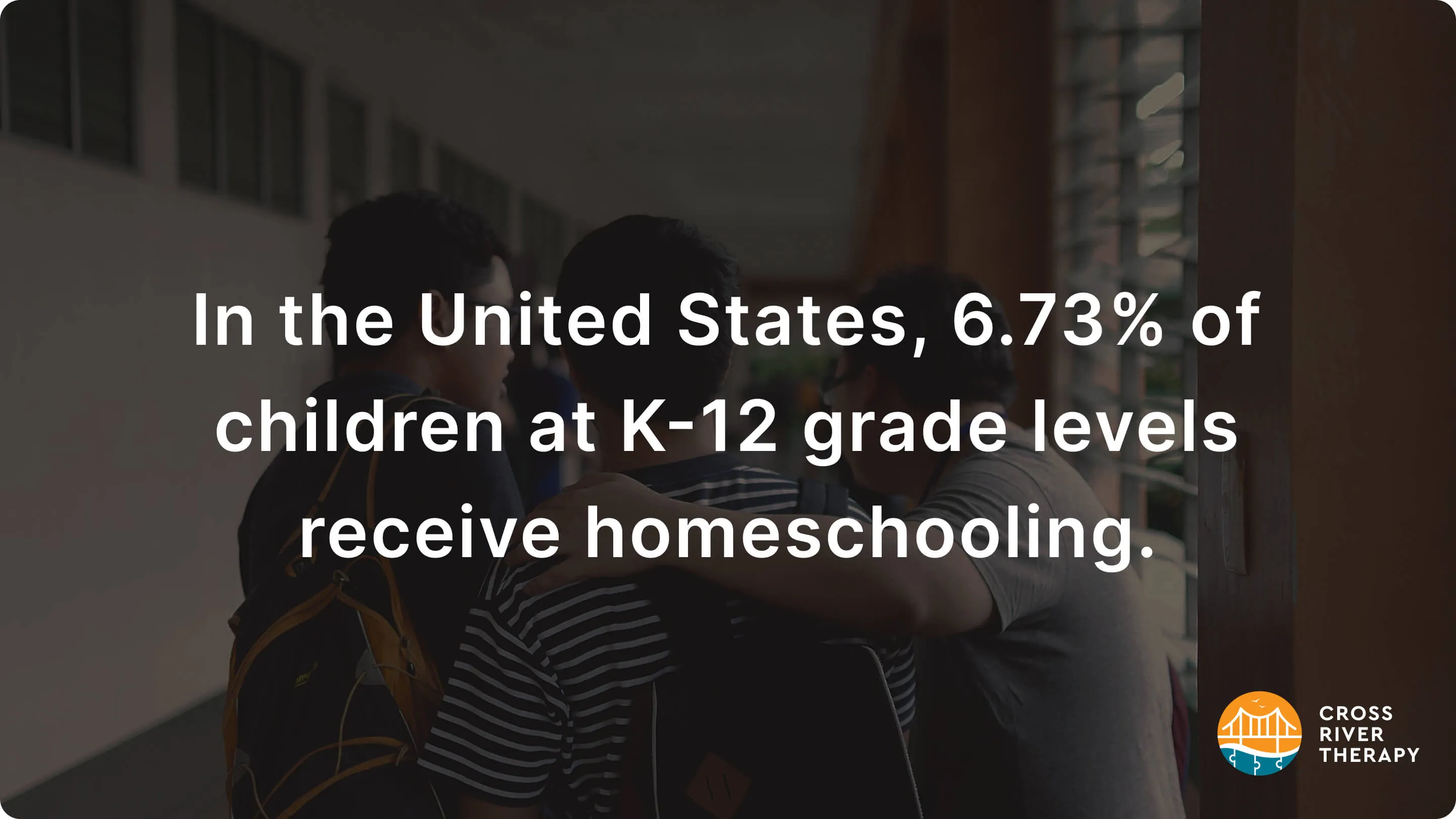
When it comes to demographics of homeschooled students, 7 out of 10 homeschooled students are white.
Did homeschooling increase after the pandemic?
Yes, US rates of homeschooling increased by 100% during the lockdown phase of the pandemic.
